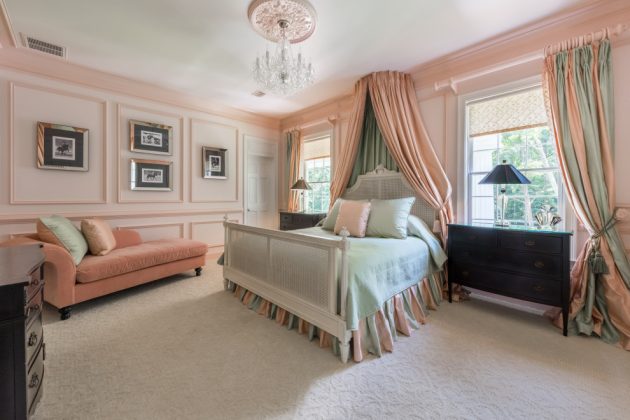The allure of Shingle Style homes has captivated homeowners and architects alike for over a century, and their enduring popularity can be attributed to the perfect blend of elegance, comfort, and versatility. Born out of the traditional New England coastal residences, this architectural style has evolved to encompass a wide range of designs, from traditional to modern, making it an attractive choice for those seeking a unique and inviting living space.
Origins and Evolution of Shingle Style Homes
Shingle Style architecture emerged during the late 19th century, primarily in the Northeast United States, as a response to the ornate and heavily decorated Victorian homes that dominated the landscape at the time. This new style emphasized simplicity, comfort, and a closer connection to nature, characterized by the use of shingles as the primary exterior material. The shingles, often in various shades of gray, brown, or weathered wood tones, provided a rustic, organic look that blended seamlessly with the surroundings.
Over time, the Shingle Style has undergone significant transformations, influenced by various architectural movements and technological advancements. While maintaining its core essence, modern Shingle Style homes now incorporate a wide array of materials, designs, and features, catering to diverse tastes and lifestyles. This adaptability has contributed to the style’s enduring appeal, allowing it to remain relevant and desirable in the ever-changing world of architecture and interior design.
Defining Characteristics of Shingle Style Homes
Despite the evolution and variations within the Shingle Style, certain key elements have remained consistent and define this architectural genre:
- Shingle Cladding: The most distinctive feature of Shingle Style homes is the extensive use of shingles on the exterior. These can be made from wood, asphalt, or other materials and are often laid in a decorative pattern.
- Asymmetrical Facades: Unlike the symmetrical facades of many other architectural styles, Shingle Style homes frequently feature asymmetrical designs, which add to their charm and visual interest.
- Gabled Roofs: Deeply pitched gabled roofs are common, often with multiple gables and cross-gables, creating a complex and dynamic roofline.
- Porches and Verandas: Large porches, sometimes wrapping around the house, are a classic feature, providing a transition space between the indoors and outdoors.
- Casual, Relaxed Interior: Interiors are designed to be cozy and inviting, with an emphasis on natural materials, minimal ornamentation, and an open, airy feel.
Interior Design and Decorating Ideas for Shingle Style Homes
The interior of a Shingle Style home is as captivating as its exterior, offering a perfect blend of traditional warmth and modern functionality. When it comes to decorating, the key is to enhance the inherent charm of the space without overpowering it. Here are a few ideas to consider:
- Use Natural Materials: Incorporate natural materials such as wood, stone, and brick into your design. These materials not only complement the shingle exterior but also bring warmth and coziness to the interior.
- Emphasize Functionality: Shingle Style homes are meant to be lived in and enjoyed. Focus on creating functional spaces that flow well, such as open-plan living areas that seamlessly connect the kitchen, dining, and living spaces.
- Incorporate Earthy Colors: Earthy tones and muted colors reflect the natural, outdoor emphasis of the Shingle Style. Consider incorporating shades of green, blue, and sandy neutrals into your color palette.
- Add Textile Interest: Textiles can add depth and warmth to any room. Incorporate rugs, throw pillows, and blankets in natural fibers and muted colors to enhance the cozy atmosphere of your Shingle Style home.
Sustainability and Modern Adaptations
In an era where sustainability and environmental consciousness are paramount, Shingle Style homes offer a unique advantage. Their emphasis on natural materials, passive design principles, and adaptability to local environments makes them an attractive choice for those interested in reducing their ecological footprint. Modern adaptations of the Shingle Style often include advanced insulation techniques, renewable energy systems, and eco-friendly materials, blending traditional aesthetics with contemporary sustainability standards.
Conclusion
The timeless appeal of Shingle Style homes lies in their unique blend of tradition and flexibility, allowing them to seamlessly integrate into a variety of settings, from coastal landscapes to urban environments. Whether you’re drawn to their classic, rustic charm or the potential for modern, sustainable living, Shingle Style homes offer a captivating option for those seeking a cozy, inviting, and elegantly understated place to call home.
Frequently Asked Questions
What is the typical cost range for building a Shingle Style home?
+The cost of building a Shingle Style home can vary widely, depending on the size of the home, the materials used, and the location. On average, the cost per square foot for a high-quality Shingle Style home can range from 150 to 400, making the total cost for a 2,500 square foot home anywhere from 375,000 to 1,000,000.
How can I incorporate modern elements into a traditional Shingle Style home design?
+Incorporating modern elements into a traditional Shingle Style home can be achieved by adding contemporary interior design elements, such as sleek lighting fixtures, modern appliances, and minimalist decor, while maintaining the traditional exterior and layout of the home. Additionally, incorporating large windows, open floor plans, and smart home technology can also bring a modern touch to the classic design.
What are some common challenges faced during the construction of Shingle Style homes?
+Common challenges during the construction of Shingle Style homes include ensuring accurate and detailed craftsmanship, especially with the shingle cladding and intricate roof designs. Additionally, integrating modern sustainability features while maintaining the traditional aesthetic can be a challenge. Working with experienced architects and builders who are familiar with the Shingle Style can help mitigate these challenges.



